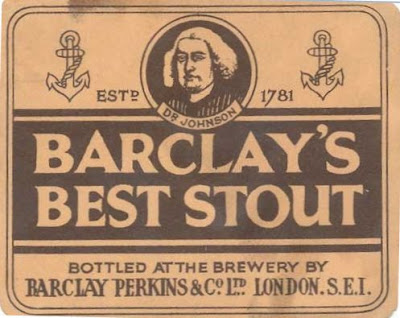Ads not shown when logged in
-
Automated Tracker

 Shut up about Barclay Perkins - Let's Brew - 1922 Barclay Perkins BS
Shut up about Barclay Perkins - Let's Brew - 1922 Barclay Perkins BS
Visit the Shut up about Barclay Perkins site
The domestic version of BS – I’m not sure if at this point it still stood for Brown Stout or if it had become Best Stout – was, at 1055º, more the gravity that you’d expect from a 1920s London draught Stout.
Most London breweries – especially the ones that had made their name brewing Porter – had similar beers. The gravity obviously being set by the last set of price controls. 1055º puts it at the minimum OG for a beer in the 9d per pint class.
Surprisingly, as Barclay Perkins were enthusiastic users of both, there’s neither adjuncts nor sugar in the grist. Well, apart from roast barley. Oh, hang on a minute. On the brewing record it says in red ink “Special all malt brew for yeast”. That explains it, then. I wonder if drinkers noticed anything special about this batch?
The hops were a little on the old side, but had all been kept in a cold store: Mid Kent from 1919 and 1920, Pacific from 1920.
| 1922 Barclay Perkins BS |
| mild malt |
9.00 lb |
69.23% |
| brown malt |
1.00 lb |
7.69% |
| amber malt |
1.00 lb |
7.69% |
| crystal malt 60 L |
1.00 lb |
7.69% |
| roast barley |
1.00 lb |
7.69% |
| Cluster 120 mins |
1.75 oz |
|
| Fuggles 60 mins |
1.50 oz |
|
| Fuggles 30 mins |
1.75 oz |
|
| OG |
1055 |
|
| FG |
1017 |
|
| ABV |
5.03 |
|
| Apparent attenuation |
69.09% |
|
| IBU |
74 |
|
| SRM |
27 |
|
| Mash at |
154º F |
|
| Sparge at |
170º F |
|
| Boil time |
120 minutes |
|
| pitching temp |
60º F |
|
| Yeast |
Wyeast 1099 Whitbread Ale |
|
The above is an excerpt from Armistice, my wonderful book on brewing in WW I.
More...
Similar Threads
-
By Blog Tracker in forum Blog Tracker
Replies: 0
Last Post: 29-07-2020, 07:21
-
By Blog Tracker in forum Blog Tracker
Replies: 0
Last Post: 27-08-2014, 07:12
-
By Blog Tracker in forum Blog Tracker
Replies: 0
Last Post: 25-08-2014, 13:30
-
By Blog Tracker in forum Blog Tracker
Replies: 0
Last Post: 16-03-2014, 06:31
-
By Blog Tracker in forum Blog Tracker
Replies: 0
Last Post: 14-02-2014, 07:11
 Posting Permissions
Posting Permissions
- You may not post new threads
- You may not post replies
- You may not post attachments
- You may not edit your posts
-
Forum Rules






 Reply With Quote
Reply With Quote